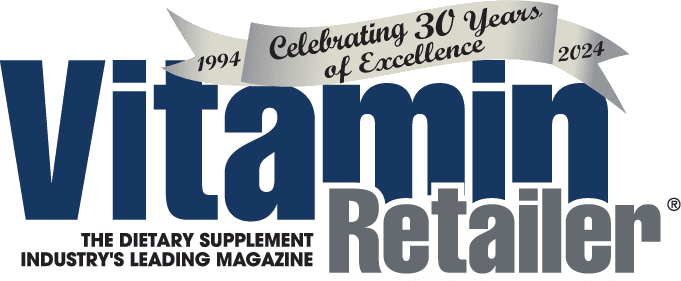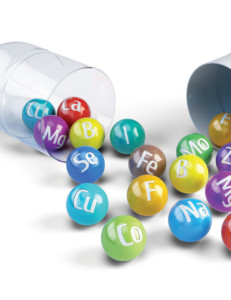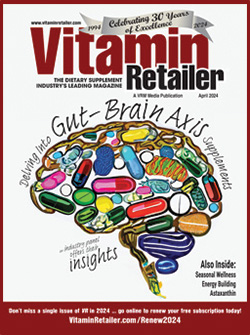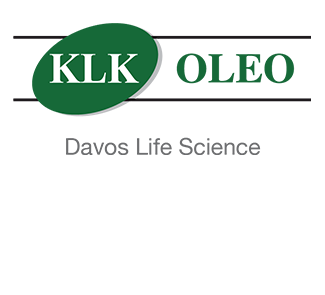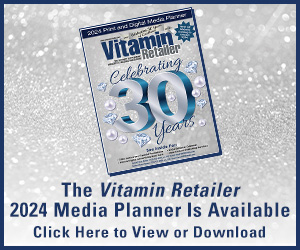Found in hundreds of proteins and enzymes, iron is an essential mineral for human beings and other species.1,2 The major contribution of this mineral to human health is its use in the formation of heme, an iron-containing compound found in two proteins: hemoglobin and myoglobin. Both are involved in the transport and storage of oxygen. Hemoglobin, found in red blood cells, transports oxygen from the lungs to the rest of the body for use in energy metabolism. Myoglobin transports and stores (short-term) oxygen in muscle cells to supply the demand of working muscles.3,4 Additional heme-containing compounds include cytochromes, which play important roles in cellular energy production via mitochondrial electron transport. The antioxidant enzymes catalase and peroxidases are also heme-containing compounds. They protect cells against hydrogen peroxide accumulation, a potentially damaging reactive oxygen species (ROS).5,6
Iron Deficiency
Given the importance of this mineral, a deficiency would clearly be detrimental to human health. Unfortunately, iron deficiency is the most common nutrient deficiency in the U.S. and the world.7 Most of the symptoms of iron deficiency are a result of the associated anemia (i.e. insufficient number of red blood cells), and may include fatigue, rapid heart rate, palpitations and rapid breathing on exertion. Iron deficiency impairs athletic performance and physical work capacity.8 The ability to maintain a normal body temperature on exposure to cold is also impaired in iron-deficient individuals. Severe iron deficiency anemia may result in brittle and spoon-shaped nails, sores at the corners of the mouth, taste bud atrophy and a sore tongue. Pica, a behavioral disturbance characterized by the consumption of non-food items, may be a symptom and a cause of iron deficiency.9
People at greatest risk for an iron deficiency include infants and children between the ages of 6 months and 4 years, adolescents and pregnant women.10 Also, individuals with chronic blood loss (especially menstruating women),11 celiac disease (celiac sprue),12 H. pylori infection (e.g., ulcers),13 those who have had gastric bypass surgery,14 and vegetarians15 are all at greater risk for iron deficiency. Finally, individuals who engage in regular intense exercise may have a 30 percent greater requirement for iron,16 and new research by Parks et al.17 that of all female athletes, 4.3 percent were low in iron and nearly one-third had levels that were <20 ng/mL—defined as iron deficiency. Of these, 2.2 percent had iron deficiency anemia and 30.9 percent indicated iron deficiency without anemia.
Now consider that iron deficiency without anemia can account for poor physical performance, poor recovery, poor immune health and other health issues. While anemia is worse, iron deficiency alone is a significant factor when considering physical performance—and 30.9 percent of all females were at this level in the Park et al. study. It should also be noted that there is disagreement on what is normal and optimal iron levels. Parks et al. indicates that increasing the optimal target range for stored iron (ferritin) from 20 to 35 ng/mL would result in more than twice the number of low values for female athletes and over five times more low values for male athletes.
Iron Supplement Considerations
With the prevalence and ramifications of iron deficiency, supplementation with iron has obvious value. Nevertheless, iron supplements are not created equal. Depending upon the iron source, supplements may cause gastrointestinal (GI) irritation, nausea, vomiting, diarrhea or constipation, aka, adverse effects. Sometimes taking iron supplements with food instead of on an empty stomach may relieve GI effects, but not always.18 The best way to minimize adverse effects and assure good absorption is to use a source iron that is gentle on the system, safe and provides proven efficacy. Iron protein succinylate (IronAid from Chemi Nutra) is just such a source.
Tolerability of Iron Protein Succinylate
A medical journal conducted a systematic review19 of 111 studies with 10,695 patients to analyze the tolerability of several iron supplements with regard to overall and GI adverse effects (AEs) for each supplement. The results were that AEs for iron protein succinylate were 7.3 percent, while AEs for the other forms of iron were as follows: 23.5 percent for ferrous glycine sulfate, 30.9 percent for ferrous gluconate, 32.3 percent for ferrous sulfate, and 47.0 percent for ferrous fumarate. The results clearly demonstrate that iron protein succinylate (IronAid) has well tolerated compared to the other forms of iron tested.
Safety of Iron Protein Succinylate
In addition, iron protein succinylate is a safe dietary supplement for ongoing use. This has been established in animal research20,21 and in human research22 with doses ranging from 40-120 mg of iron per dose.
Iron Safety in General
As long as we’re discussing safety, let’s take a moment to address a misunderstanding about iron safety in general. In the early 1990s there were reports about a potential correlation between ferritin (a protein that stores iron in the body) and coronary heart disease (CHD) in the men studied. As a result, some men stop taking iron supplements due to a fear that iron supplementation might lead to heart attacks. This fear is unfounded, and not supported by the research.
In fact, there was no good evidence to support the existence of an association between a number of different measures of iron status and coronary heart disease (CHD) in a review of 12 observational studies including 7,800 cases of CHD.23 Furthermore, while serum ferritin concentration is the measure of iron status thought to best reflect iron stores, the same review found no difference in the risk of CHD between individuals with serum ferritin concentrations in the 5 prospective studies that measured serum ferritin. In addition, a study published In Nutrition, Metabolism & Cardiovascular Diseases,24 found that higher levels of ferritin and other markers of iron storage in blood were not associated with the risk of mortality, among a large sample of U.S. adults.
So, why is it that the initial research found a correlation between ferritin and CHD? Consider that two large prospective studies found increased dietary heme iron (meaning, iron from meat sources), but not total dietary iron, to be associated with increased risk of heart attack.25,26 The significance of this is that when iron stores are high (i.e., when you already have plenty of iron in your body), the body is able to effectively inhibit more nonheme iron from being absorbed. However, it is not able to effectively inhibit the absorption of heme iron, which suggests that iron from animal sources may play a more important role than total iron intake in CHD risk.27 To review, there is no data to suggest that nonheme iron supplements or nonheme iron from dietary sources (e.g., kidney beans, blackstrap molasses, baked beans, spinach, etc.28) in any way contribute toward CHD. There is data to suggest that hemeiron from dietary sources may increase the risk of CHD. So, reducing your intake of red meat (the major source of hemeiron) may reduce your risk of CHD―but that has already been established.
Treating Iron Deficiency Anemia With Iron Protein Succinylate
The most fundamental litmus test for assessing the efficacy of any given form of iron is its ability to effectively treat iron deficiency. In a randomized, double-blind study29 with 502 children being treated for iron deficiency or over anemia, iron protein succinylate (IronAid) demonstrated significantly greater values of blood iron at the end of the study, indicating a more progressive and steady therapeutic effect than another form of iron tested—although both forms treated the iron deficiency. Additionally, iron protein succinylate was significantly more tolerable. Similar results with children were seen in other studies on iron protein succinylate.30
Likewise, studies have shown that iron protein succinylate also has benefits in treating adults with iron deficiency anemia. In a meta-analysis31 of 1,800 iron deficiency anemia patients from three multicenter clinical trials, supplementation with iron protein succinylate increased hemoglobin more effectively than other forms of iron over a period of 30-60 days. As expected, iron protein succinylate also resulted in less GI side effects (P<0.01) and was definitely better tolerated in pregnant women (p<0.01). In fact, in a study32 with 105 anemic pregnant women, treatment with iron protein succinylate gradually improved the majority of symptoms and signs of anemia were gradually improved, and there was a significant increase in hemoglobin, serum ferritin and other blood parameters (p < 0.05). This is especially important when considering that depleted maternal iron levels in early pregnancy is associated with a higher risk of the baby being small for gestational age.33
Exercise Performance With Iron
A study34 assessing the correlation between blood and inflammatory variables and stress fractures (SF) occurrence among 438 military recruits (female combatants = 227, male combatants = 83, noncombatant females = 128) during basic training, found that 18 percent of female combatants had anemia compared with 8 percent of males and 19 percent of noncombatants. Iron deficiency was noted in 40 percent, 6 percent, and 38 percent, respectively. Twelve percent of female combatants developed stress fractures, whereas none occurred among male combatants or noncombatants. Subjects sustaining stress fractures had significantly lower levels of serum iron and iron saturation. Other research has also shown iron deficiency among female military recruits.35
Likewise, the American Journal of Clinical Nutrition36 has indicated that the prevalence of iron deficiency anemia is likely to be higher in athletic populations and groups, especially in younger female athletes. Iron deficiency anemia only decreases athletic performance but also impairs immune function and leads to other physiologic dysfunctions. Consequently, the young female athlete may want to consider iron supplementation to prevent a decline in iron status during training. Additionally, research has demonstrated exercise performance benefits for women (and men) using iron supplements.
In a 12-week, randomized, double-blind, placebo-controlled study,37 40 young elite athletes (aged 13-25 years) who were iron deficient by nonanemic were treated twice a day with 100 mg of iron or a placebo to find out if iron repletion would lead to an increase in red blood cell volume (RBV) and performance capacity. The results were that ferritin levels significantly increased (p<0.001) to the normal range in the iron-treated group, as opposed to a decrease in the placebo group (PG). Furthermore, in the iron group there were significant increases in VO2 max and in O2 consumption, measures of improved aerobic performance capacity.
A systematic review and meta-analysis38 of several randomized controlled trials was conducted to determine the effect of iron supplementation compared with control on exercise performance in in women of reproductive age. Results were that iron supplementation improved both maximal exercise performance demonstrated by statistically significant increase in VO2 max (p=0.005-0.01) and significantly improved maximal and submaximal exercise performance.
A six-week, randomized, double-blind, placebo-controlled trial39 was conducted to investigate the effects of iron supplementation (100 mg/day) or placebo on iron status and performance in 31 nonanemic female rowers during training. Results revealed: 1) improvements in iron stores (as serum ferritin) in the iron treatment group (p=0.07), 2) slower lactate response during the first half of the time trial and after five minutes of recovery (p=0.05), and 3) greater improvements in energy expenditure (p=0.01) and energetic efficiency compared with placebo (p=0.03). In short, female rowers with depleted iron stores improved their iron status and energetic efficiency during endurance exercise, suggesting that iron supplementation may maximize the benefits of endurance training.
Conclusion
Iron is an essential mineral in the formation of heme, found in hemoglobin and myoglobin, which are involved in the transport and storage of oxygen, as well as in cytochromes, which play important roles in cellular energy. Iron deficiency is also the most common nutrient deficiency in the U.S. and the world. Depending upon the source, however, supplements may cause adverse gastrointestinal effects such as irritation, nausea, vomiting, diarrhea or constipation. Iron protein succinylate (IronAid) is a form of iron shown in human clinical research to have considerably lower gastrointestinal adverse effects than other forms of iron tested, as well as a good safety profile. It has also been clinically demonstrated to effectively treat iron deficiency anemia with good tolerability. In addition, iron deficiency anemia is likely to be higher in athletic populations—especially in younger female athletes—and supplementation has been shown to improve exercise performance. VR
References:
1 Wood RJ, Ronnenberg AG. Iron. In: Shils ME, Shike M, Ross AC, Caballero B, Cousins RJ,eds. Modern Nutrition in Health and Disease. 10th ed. Philadelphia: Lippincott Williams & Wilkins; 2006:248-270.
2 Beard JL, Dawson HD. Iron. In: O’Dell BL, Sunde RA, eds. Handbook of nutritionally essential minerals. New York: Marcel Dekker, Inc; 1997:275-334.
3 Yip R, Dallman PR. Iron. In: Ziegler EE, Filer LJ, eds. Present Knowledge in Nutrition. 7th ed. Washington D.C.: ILSI Press; 1996:277-292.
4 Brody T. Nutritional Biochemistry. 2nd ed. San Diego: Academic Press; 1999.
5 Yip R, Dallman PR. Iron. In: Ziegler EE, Filer LJ, eds. Present Knowledge in Nutrition. 7th ed. Washington D.C.: ILSI Press; 1996:277-292.
6 Brody T. Nutritional Biochemistry. 2nd ed. San Diego: Academic Press; 1999.
7 Yip R, Dallman PR. Iron. In: Ziegler EE, Filer LJ, eds. Present Knowledge in Nutrition. 7th ed. Washington D.C.: ILSI Press; 1996:277-292.
8 Beard JL. Iron biology in immune function, muscle metabolism and neuronal functioning. J Nutr 2001;131(2S-2):568S-579S.
9 Lee GR. Disorders of iron metabolism and heme synthesis. In: Lee GR, Foerster J, Paraskevas F, Greer JP, Rogers GM, eds. Wintrobe’s Clinical Hematology. 10th ed. Baltimore: Williams and Wilkins; 1999:979-1070.
10 Brody T. Nutritional Biochemistry. 2nd ed. San Diego: Academic Press; 1999.
11 Fairbanks VF. Iron in Medicine and Nutrition. In: Shils M, Olson JA, Shike M, Ross AC, eds. Modern Nutrition in Health and Disease. 9th ed. Baltimore: Williams & Wilkins; 1999:223-239.
12 Dewar DH, Ciclitira PJ. Clinical features and diagnosis of celiac disease. Gastroenterology 2005;128(4 Suppl 1):S19-24.
13 Sherman PM, Macarthur C. Current controversies associated with Helicobacter pylori infection in the pediatric population. Front Biosci 2001;6:E187-192.
14 loomberg RD, Fleishman A, Nalle JE, Herron DM, Kini S. Nutritional deficiencies following bariatric surgery: what have we learned? Obes Surg 2005;15(2):145-154.
15 Food and Nutrition Board, Institute of Medicine. Iron. Dietary reference intakes for vitamin A, vitamin K, boron, chromium, copper, iodine, iron, manganese, molybdenum, nickel, silicon, vanadium, and zinc. Washington D.C.: National Academy Press; 2001:290-393.
16 Food and Nutrition Board, Institute of Medicine. Iron. Dietary reference intakes for vitamin A, vitamin K, boron, chromium, copper, iodine, iron, manganese, molybdenum, nickel, silicon, vanadium, and zinc. Washington D.C.: National Academy Press; 2001:290-393.
17 Parks RB, Hetzel SJ, Brooks MA. Iron Deficiency and Anemia among Collegiate Athletes: A Retrospective Chart Review. Med Sci Sports Exerc. 2017 Aug;49(8):1711-1715.
18 Minerals. Drug Facts and Comparisons. St. Louis: Facts and Comparisons; 2000:27-51.
Cancelo-Hidalgo MJ, Castelo-Branco C, Palacios S, Haya-Palazuelos J, Ciria-Recasens M, Manasanch J, Pérez-Edo L.Tolerability of different oral iron supplements: a systematic review. Curr Med Res Opin. 2013 Apr;29(4):291-303.
19 Forster R. Iron protein succinylate: preclinical safety assessment. Int J Clin Pharmacol Ther Toxicol. 1993 Feb;31(2):53-60.
20 Pagella PG, Bellavite O, Agozzino S, Donà GC. Pharmacological and toxicological studies on an iron succinyl-protein complex (ITF282) for oral treatment of iron deficiency anemia. Arzneimittelforschung. 1984;34(9):952-8.
21 Iron Proteinsuccinylate. Periodic Safety Update Report. According to Decree no. 44. Released on February 18, 1997 by the Italian Ministry of Helth. Italfarmaco Spa, Medical Department, Drug Safety Unit. February 1, 2000: 16 pgs.
22 Danesh J, Appleby P. Coronary heart disease and iron status: meta-analyses of prospective studies. Circulation. 1999;99(7):852-854.
23 Menke A, Muntner P, Fernández-Real JM, Guallar E.The association of biomarkers of iron status with mortality in US adults. Nutr Metab Cardiovasc Dis. 2012 Sep;22(9):734-40.
24 Ascherio A, Willett WC, Rimm EB, Giovannucci EL, Stampfer MJ. Dietary iron intake and risk of coronary disease among men. Circulation. 1994;89(3):969-974.
25 Klipstein-Grobusch K, Grobbee DE, den Breeijen JH, Boeing H, Hofman A, Witteman JC. Dietary iron and risk of myocardial infarction in the Rotterdam Study. Am J Epidemiol 1999;149(5):421-428.
26 de Valk B, Marx JJ. Iron, atherosclerosis, and ischemic heart disease. Arch Intern Med 1999;159(14):1542-1548.
27 USDA National Nutrient Database for Standard Reference, Release 21;2008.
28 Careddu P, Scotti A. Controlled, double-blind, multicenter clinical trial of iron protein succinylate in the treatment of iron deficiency in children. Int J Clin Pharmacol Ther Toxicol. 1993 Apr;31(4):157-69.
29 Haliotis FA, Papanastasiou DA. Comparative study of tolerability and efficacy of iron protein succinylate versus iron hydroxide polymaltose complex in the treatment of iron deficiency in children. Int J Clin Pharmacol Ther. 1998 Jun;36(6):320-5.
30 Köpcke W, Sauerland MC. Meta-analysis of efficacy and tolerability data on iron proteinsuccinylate in patients with iron deficiency anemia of different severity. Arzneimittelforschung. 1995 Nov;45(11):1211-6.
31 Sifakis S, Angelakis E, Papadopoulou E, Stratoudakis G, Fragouli Y, Koumantakis E. The efficacy and tolerability of iron protein succinylate in the treatment of iron-deficiency anemia in pregnancy. Clin Exp Obstet Gynecol. 2005;32(2):117-22.
32 Alwan NA, Cade JE, McArdle HJ, Greenwood DC, Hayes HE, Simpson NA. Maternal iron status in early pregnancy and birth outcomes: insights from the Baby’s Vascular health and Iron in Pregnancy study. Br J Nutr. 2015 Jun 28;113(12):1985-92.
33 Merkel D, Moran DS, Yanovich R, Evans RK, Finestone AS, Constantini N, Israeli E. The association between hematological and inflammatory factors and stress fractures among female military recruits. Med Sci Sports Exerc. 2008 Nov;40(11 Suppl):S691-7.
34 Israeli E, Merkel D, Constantini N, Yanovich R, Evans RK, Shahar D, Moran DS. Iron deficiency and the role of nutrition among female military recruits. Med Sci Sports Exerc. 2008 Nov;40(11 Suppl):S685-90.
35 Beard J, Tobin B. Iron status and exercise. Am J Clin Nutr. 2000 Aug;72(2 Suppl):594S-7S.
36 Friedmann B, Weller E, Mairbaurl H, Bärtsch P. Effects of iron repletion on blood volume and performance capacity in young athletes. Med Sci Sports Exerc. 2001 May;33(5):741-6.
37 Pasricha SR, Low M, Thompson J, Farrell A, De-Regil LM. Iron supplementation benefits physical performance in women of reproductive age: a systematic review and meta-analysis. J Nutr. 2014 Jun;144(6):906-14.
38 DellaValle DM, Haas JD. Iron supplementation improves energetic efficiency in iron-depleted female rowers. Med Sci Sports Exerc. 2014 Jun;46(6):1204-15.
Gene Bruno, MS, MHS, the dean of academics for Huntington University of Health Sciences, is a nutritionist, herbalist, writer and educator. For more than 30 years he has educated and trained natural product retailers and health care professionals, has researched and formulated natural products for dozens of dietary supplement companies, and has written articles on nutrition, herbal medicine, nutraceuticals and integrative health issues for trade, consumer magazines and peer-reviewed publications. He can be reached at gbruno@hchs.edu.
